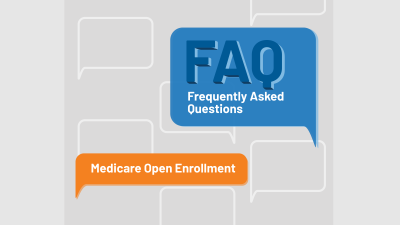 Medicare Open Enrollment FAQs
FAQ Landing Page
Medicare Open Enrollment FAQs
FAQ Landing Page
This list of Frequently Asked Questions (FAQs) about Medicare Open Enrollment covers a range of topics related to Medicare enrollment, Medicare Advantage, Part D, Medigap, employer/retiree coverage, Medicaid and other low-income assistance, Medicare and the Marketplaces, and more.